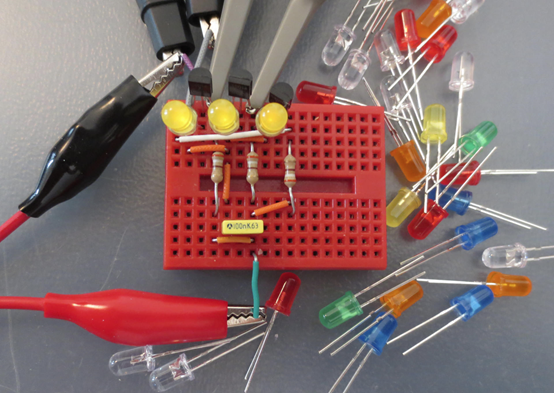
What would it take to build an addressable LED like the WS2812 (aka Neopixel) using only discrete transistors? Time for a small “1960 style logic meets modern application” technology fusion project.
Continue reading “The TransistorPixel”
What would it take to build an addressable LED like the WS2812 (aka Neopixel) using only discrete transistors? Time for a small “1960 style logic meets modern application” technology fusion project.
Continue reading “The TransistorPixel”
Sometimes you find things you have not even been looking for…
A chaotic oscillator is an electronic circuit that can exhibit “chaotic“, nonperiodic behavior. A commonly cited example is Chua’s circuit, but there are many others. I always regarded these as carefully designed, rather academic, examples. So I was a bit surprised to observe apparently chaotic behavior in a completely unrelated experiment.
Continue reading “Building a Chaotic Oscillator from Common Components”Anybody who has ever taken an advanced computer architecture class has heard of the CDC6600, which was the world’s fastest computer from 1964 to 1969. It was the machine that put Seymour Cray on the map as a supercomputer architect. The design of the machine is well documented in a book by James Thornton, the lead designer, and is therefore publically accessible. Among several architectural concepts that later found use in RISC, the CDC6600 is known for introducing the Scoreboard. Which is, along with Tomasulo’s algorithm, one of the earliest concepts for out-of-order processing.
Besides the architectural progress, the CDC6600 was impressive for its clock speed of 10 MHz. This may not sound much, but consider that this was a physically very large machine entirely built from discrete resistors and transistors in the early 1960s. Not a single integrated circuit was involved. For comparison, the PDP-8, released in 1965 and also based on discrete logic, had a clock speed of 1.5 MHz. The first IBM PC, released 20 years later, was clocked at less than half the speed of the CDC6600 despite being based on integrated circuits. The high clockrate is even more impressive when comparing it to more recent (hobbyist) attempts to design CPUs with discrete components such as the MT15, the Megaprocessor or the Monster6502. Although these are comparatively small designs based on modern components, none of them get to even a tenth of the CDC6600 clock speed.
Continue reading “What made the 1960s CDC6600 supercomputer fast?”